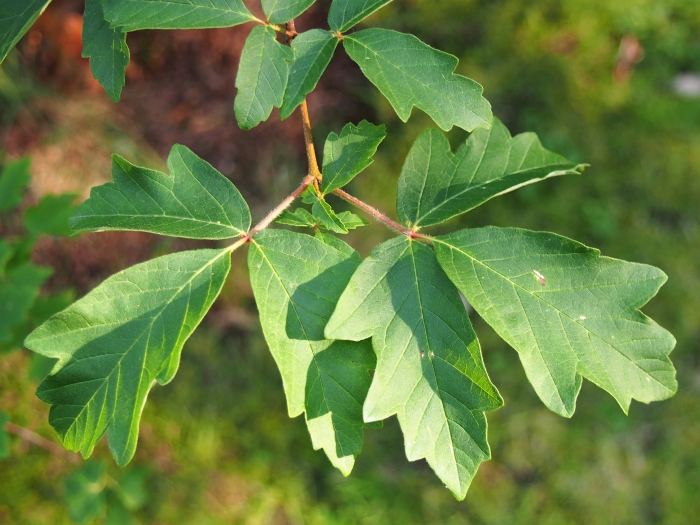Paperbark Maple
(Acer griseum)
Paperbark Maple (Acer griseum)
/
/

Agnieszka Kwiecień, Nova
CC BY-SA 4.0
Image By:
Agnieszka Kwiecień, Nova
Recorded By:
Copyright:
CC BY-SA 4.0
Copyright Notice:
Photo by: Agnieszka Kwiecień, Nova | License Type: CC BY-SA 4.0 | License URL: https://creativecommons.org/licenses/by-sa/4.0 | Uploader: Nova | Publisher: Wikimedia Commons | Title: Acer_griseum_Klon_strzępiastokory_2020-08-07_03.jpg | Notes: User created page with UploadWizard |
























Estimated Native Range
Summary
Acer griseum, commonly known as Paperbark Maple, is a small to medium-sized deciduous tree. It is native to central China, often found in small groves in mixed forests and on forest edges, where it enjoys well-drained, loamy soils. This species typically reaches 6–9 m (20–30 ft) in height and 5–6 m (16–20 ft) in width, with a trunk up to 70 cm (28 in) in circumference. The Paperbark Maple is renowned for its ornamental value, featuring smooth, shiny orange-red bark that peels away in thin, papery layers, often remaining on the branches until naturally worn away. The bark may become more fissured as the tree ages. The young shoots are densely downy, becoming smoother by the second or third year, with the bark beginning to exfoliate by the third or fourth year. Its yellow flowers are androdioecious, appearing in small pendent corymbs in spring, followed by a paired samara with two winged seeds. The foliage provides a spectacular autumn display, with leaves turning shades of red, orange, and pink.
The Paperbark Maple is highly valued for its decorative exfoliating bark and vibrant fall coloration, making it a favorite for ornamental use in temperate regions. It is suitable for small gardens, urban landscapes, and as a specimen tree. The tree is relatively low-maintenance, requiring medium amounts of water and thriving in full sun to part shade. It prefers soils with medium drainage. Cultivars like ’Copper Rocket’ offer a columnar form for varied landscape design. Acer griseum has earned the Royal Horticultural Society’s Award of Garden Merit, indicating its exceptional qualities for garden use. However, gardeners should be aware that it can be susceptible to pests such as aphids and horse chestnut scale, and occasionally to diseases like Verticillium wilt.CC BY-SA 4.0
The Paperbark Maple is highly valued for its decorative exfoliating bark and vibrant fall coloration, making it a favorite for ornamental use in temperate regions. It is suitable for small gardens, urban landscapes, and as a specimen tree. The tree is relatively low-maintenance, requiring medium amounts of water and thriving in full sun to part shade. It prefers soils with medium drainage. Cultivars like ’Copper Rocket’ offer a columnar form for varied landscape design. Acer griseum has earned the Royal Horticultural Society’s Award of Garden Merit, indicating its exceptional qualities for garden use. However, gardeners should be aware that it can be susceptible to pests such as aphids and horse chestnut scale, and occasionally to diseases like Verticillium wilt.CC BY-SA 4.0
Plant Description
- Plant Type: Tree
- Height: 20-30 feet
- Width: 15-25 feet
- Growth Rate: Slow
- Flower Color: N/A
- Flowering Season: Spring
- Leaf Retention: Deciduous
Growth Requirements
- Sun: Full Sun, Part Shade
- Water: Medium
- Drainage: Medium
Common Uses
Bee Garden, Bird Garden, Butterfly Garden, Deer Resistant, Drought Tolerant, Potted Plant, Street Planting
Natural Habitat
Central China, in small groves in mixed forests and on forest edges
Other Names
Common Names: Paper Bark Maple, Blood-Bark Maple
Scientific Names: , Acer griseum, Acer nikoense var. griseum, Acer pedunculatum, Acer nikoense subsp. griseum, Crula grisea,
GBIF Accepted Name: Acer griseum (Franch.) Pax